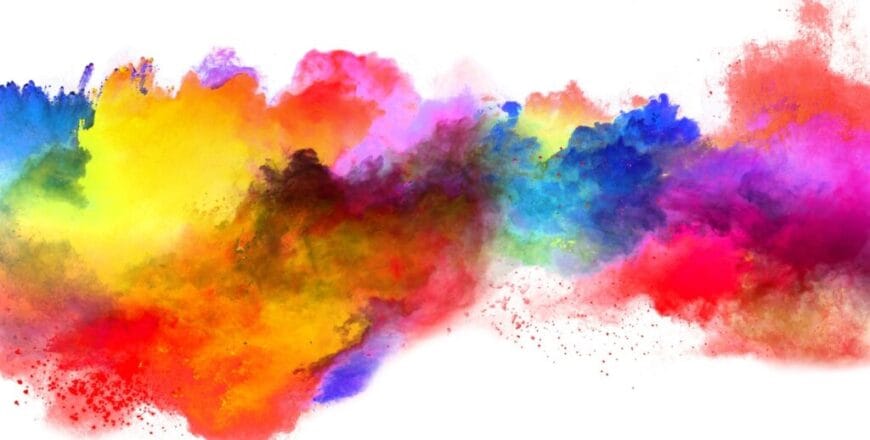As an experienced torero, you can literally have a “life and death” duel with colours. Determining the right colours, fine-tuning their tonality and adjusting their harmonic ratio – all this will affect whether you get well-deserved applause from your key customers.
If you select your main colour, there is a range of different approaches to what combinations to choose. When designing a logo, website or corporate identity, you should always follow what the key customers expect from you and which colour you can use to underline the idea of your business.
Complementary colours
The colours placed opposite each other in the colour wheel are complementary. Their combination is not suitable for text and its background, because it creates a high contrast and is difficult to read. But if the designer combines and stratifies them appropriately, they can create a very attractive and expressive environment that won’t leave anyone out in the cold.
Monochromatic colours
On the contrary, the use of the same colour in different shades seems rather gentle and conservative. Such a colour option is suitable if you want to inspire a feeling of harmony and communion in the audience. You can often come across this colour choice in products and services that should inspire peace and relaxation or create an atmosphere for relaxation.
Analogous colours
Using three colours placed next to each other in the colour wheel can be very attractive. You can often see this combination in nature – you have surely noticed that orange, pink and purple complement each other beautifully at sunset. However, they should be tuned by an experienced graphic designer with great feeling. The result can suffer from significant garishness. It usually pays to choose one colour as the dominant one and the other two as complementary.
Triadic colours
You can also achieve a higher contrast by using triadic colours, whose spacing on the colour wheel forms an equilateral triangle. However, their contrast is not as pronounced as with complementary colours, which can be used masterfully. This is a modern palette that will definitely make you visible for customers.
Tetradic colours
There are many more colour theories, but in today’s article we will stop at a combination of four colours whose spacing on the colour wheel forms a square. Using four different colours truly requires extensive experience with different projects. To avoid garishness, you need to choose the dominant colour and then add complementary colours to it (sparingly!).
In general: The more colours you use, the riskier their use is – and can cause unwanted feelings in your customers.
We are experienced matadors for your audience
Choosing and tuning colours is no longer about playing with a colour swatch. Professional design requires seasoned graphic designers who are familiar with both the psychology of individual colours and their variations. At JennPro, we’ll create designs that emphasise your brand’s philosophy and target a precisely selected audience.
Contact us – we’ll be happy to amaze your audience!







